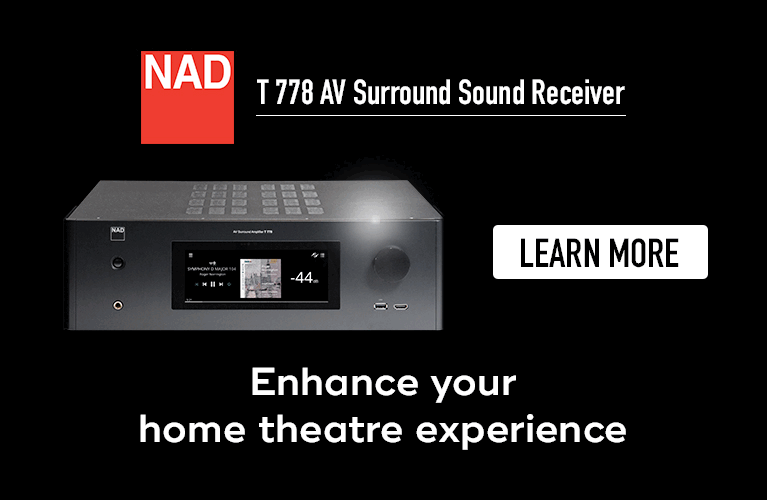Note: for the full suite of measurements from the SoundStage! Audio-Electronics Lab, click this link.
 Breaking into the audiophile sphere can be profoundly difficult for a professional audio company. Audio professionals and stereo enthusiasts tend to hold wildly divergent values regarding the gear they use, and at times, they seem to speak different languages altogether. So when a company introduces a product that crosses over from one of these worlds into the other, at best, it may be regarded as being a bit out of touch. At worst, it will garner little more than caustic derision. Hi-fi companies with pro audio roots tend to avoid revealing too much about their history for this reason. Given the circumstances, it’s a bit unusual that German audio company RME isn’t shy about disclosing its professional-grade background. In fact, they seem kind of proud of it.
Breaking into the audiophile sphere can be profoundly difficult for a professional audio company. Audio professionals and stereo enthusiasts tend to hold wildly divergent values regarding the gear they use, and at times, they seem to speak different languages altogether. So when a company introduces a product that crosses over from one of these worlds into the other, at best, it may be regarded as being a bit out of touch. At worst, it will garner little more than caustic derision. Hi-fi companies with pro audio roots tend to avoid revealing too much about their history for this reason. Given the circumstances, it’s a bit unusual that German audio company RME isn’t shy about disclosing its professional-grade background. In fact, they seem kind of proud of it.
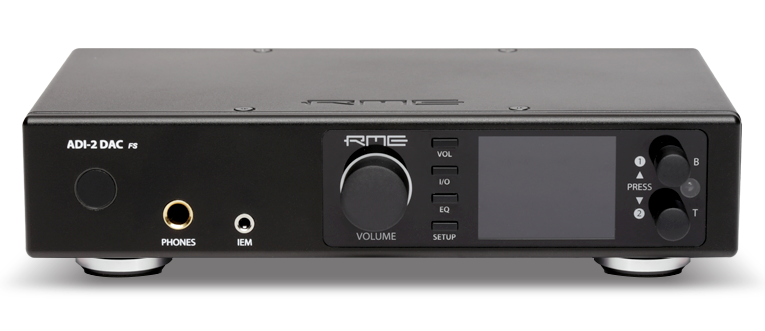
The ADI-2 DAC FS ($1299, all prices USD) is RME’s first, and as yet only, foray into audiophile-oriented gear. While the product is clearly intended for the high-end audio market, much of its value proposition—and thus its unique charm—is derived from its extensive and unabashedly pro-audio-sourced feature set. Affordable, feature-laden DACs that measure well aren’t hard to come by these days, though the ADI-2 DAC FS manages to push the everyman’s standalone DAC paradigm to the extreme. But as it turns out, pro audio companies may just have more to offer audiophiles than we’ve been giving them credit for.
Technical description
Measuring just 8.5″W × 2.05″H × 5.9″D (not including the feet) and weighing in at 2.2 pounds, the ADI-2 DAC FS is a compact package. But of course, when it comes to DACs, physical size and appearance aren’t necessarily predictors of technical capability. The specs and features list is a long one, so buckle up. The current iteration of the ADI-2 DAC FS is built around the ESS ES9028Q2M chip. Prior to the factory fire that put AKM chip manufacture on hold in October 2020, the device used the AK4493, though RME assures us that the sonic and functionality differences between the AKM- and ESS-based units are nearly imperceptible. Digital inputs are possible via USB and with S/PDIF over TosLink optical and RCA coaxial; AES/EBU is accepted over coaxial with the requisite adapter for the RCA input jack and ADAT format is accepted via TosLink. The USB input is capable of handling PCM data of up to 32 bits at 768kHz and one-bit data up to DSD256, while the other inputs accept PCM data only up to 192kHz.
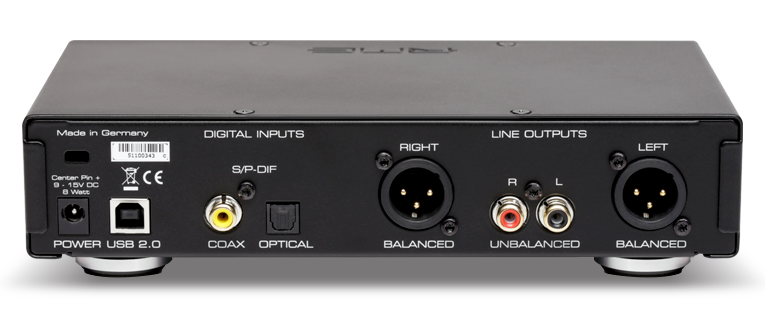
The “FS” in the model name is derived from one of RME’s pro-audio-based technologies, the SteadyClock FS, which RME claims rejects both the very lowest- and highest-frequency jitter, for an on-the-fly jitter rejection spec of 50dB regardless of the source. “FS” is short for femtoseconds, the accuracy range this low-phase-noise quartz device is said to have. SteadyClock FS, clock synchronization, and DSD interpretation—along with a slew of other features we’ll get to later, like custom filtering and Crossfeed—are all managed by an FPGA.
The analog section is DC-coupled to the RCA and XLR outputs, as well as two individually optimized headphone jacks, which ensures a linear phase response over the entire audioband. This all adds up to some impressive specs: 2.5dB of digital headroom, an unweighted signal-to-noise ratio of 120dB at the highest output level, and THD and noise of 0.00016%, as well as an output impedance of 100 ohms for RCA and double that for XLR. The 6.3mm TRS Extreme Power headphone jack has an output impedance of 0.1 ohm and can output a max of 1.5W to drive the most demanding ’phones, while the mini-TRS in-ear monitor output is designed to maintain a high SNR of 118dB (unweighted) at much lower power levels for high-efficiency IEMs.
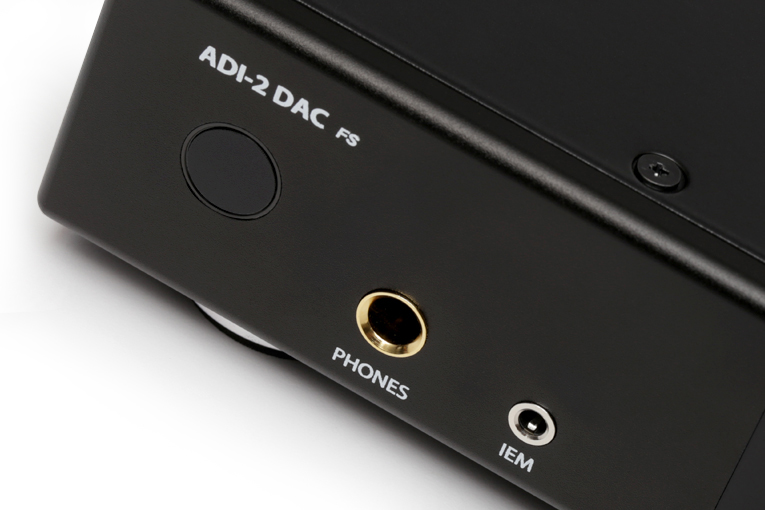
The ADI-2 DAC FS sports an array of features that certainly make it versatile enough to quell the needs of most audiophiles, if not those of audio-production pros. A 2.17 gigaFLOPS DSP chip, along with the aforementioned FPGA, equips the ADI-2 DAC FS with controls for bass, treble, variable loudness, volume, left-to-right balance, and a five-band parametric EQ, all of which allow adjustments in 0.5dB increments. Equalization can be applied separately to each channel if necessary, and users can store up to 20 custom EQ presets. The power and flexibility offered by the DSP and FPGA working in concert mean that other unconventional features are also available: a Width control with 200 steps between stereo, mono, and reverse stereo; Crossfeed, which subtly reduces stereo separation to mimic the sound of speakers in a room when you’re listening through headphones; and Mono/Stereo processing.
Of perhaps greater interest to those of us at the home audio end of things is the number of custom digital filters enabled by the ADI-2 DAC FS’s chipset. In recent years, it’s been the rage for high-end DAC manufacturers attempting to set their products apart to use custom digital reconstruction filters (or, in some cases, none at all). These filters are supposed to solve the impulse-response problems incurred by the Red Book standard’s demand for a steep drop-off between 20kHz and 22.05kHz to prevent aliasing in the audioband. The six digital filters available on the ADI-2 DAC FS—Short Delay Sharp, Short Delay Slow, Sharp, Slow, NOS, and Brickwall—allow listeners to select between some of the most common filter designs. Each of these filters addresses the problem in its own way, but in return, each also comes with its own compromises.
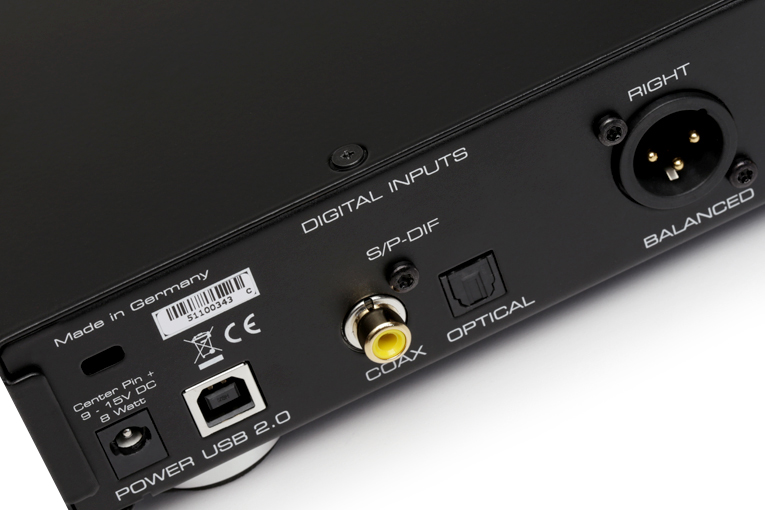
The Sharp filter is similar to the filters found in most digital audio devices, having a steep roll-off after 20kHz. The Slow filter offers better impulse response, though it’s down 1.2dB at 15kHz and a full 5dB at 20kHz. The Short Delay versions of each have similar frequency response characteristics and much improved impulse response, though this comes at the expense of phase linearity due to the use of IIR filters instead of the FIR filtering used by the previous two filtering options. The Brickwall filter provides theoretically near-perfect anti-aliasing through the use of an ultra-steep filter whose roll-off begins around 19kHz. NOS mode may be the most interesting of the included filters, or at least it’s the most controversial. It mimics the response of a non-oversampling DAC, stair-step sine-wave reproduction and all. The impulse response is perfect, though due to aliasing, the frequency response and out-of-band noise are severely compromised; the super-slow roll off is already down nearly 1dB at 10kHz and just over 3dB at 20kHz. The preceding figures are all for data sampled at 44.1kHz with wider bandwidth for higher sample rates. There’s a lot of debate surrounding the nature of the ideal digital filter and whether digital filtering really even matters. Regardless of their position on the digital filter debate, anyone with an ADI-2 DAC FS at least has the ability to listen to each of the most commonly implemented filters and decide for themselves.
Setup
Despite the almost-ridiculously long list of built-in functions, I found the ADI-2 DAC FS cooperated surprisingly well with my plug-and-play methodology. To RME’s great credit, the included 70-page user manual is possibly the clearest and most detailed work of audio literature ever to accompany a piece of consumer electronics. But even without consulting the manual, learning to use the ADI-2 DAC FS and integrate it into your system is a process marked more by little idiosyncrasies than any real difficulty. In appearance, it’s not unlike a stereo integrated amp that’s been zapped by a shrink ray, with a centrally located volume knob, four mechanical buttons, a smallish color LCD screen, and two rotary encoder knobs for navigating the various menus. While the number of possible setup permutations seems infinite—you can even choose the color of the built-in spectrum analyzer—getting set up to play music is easy enough.
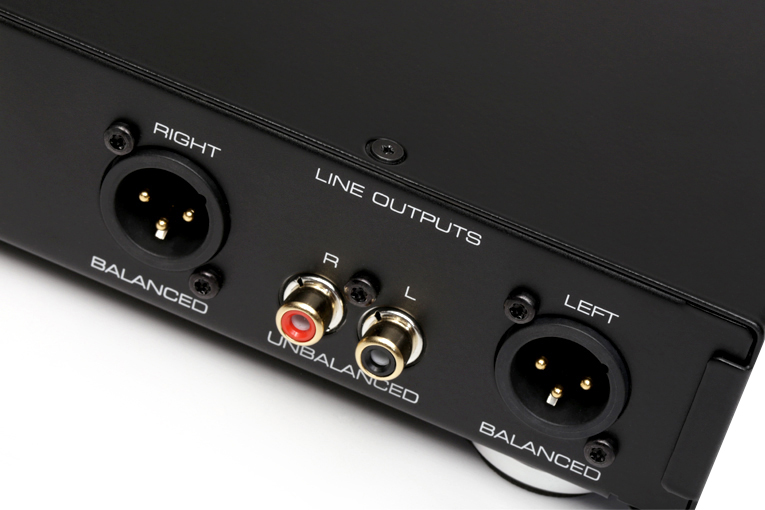
First I hooked up the included switch-mode power supply, which RME says can be exchanged for any DC supply between 9 and 15V and capable of at least 1A, although there’s supposedly no audible benefit in doing so. The ADI-2 DAC FS has a switching regulator followed by a linear one, a layout RME claims is so effective at rejecting incoming power-supply noise that it renders power-supply upgrades unnecessary. I used only the supplied PSU with the ADI-2 DAC FS, so I can’t comment on the veracity of this claim, but I never once considered that the power supply could be a weak link in my listening tests. It’s also worth bearing in mind that many of the high-quality DC supplies designed for audio use approach or exceed the price of the little RME, so this quickly becomes a moot point.
A similar argument can be made that it doesn’t matter whether the balanced XLR or unbalanced RCA outputs are used. RME says the servo-balanced symmetric output stage achieves the quoted noise and distortion specs internally before the output jacks and would do so even if one side of the balanced signal were grounded. My preamp, which I used during my time with the ADI-2 DAC FS, has only RCA inputs, so I used those. For digital inputs, I connected my LG C1 OLED display via a Monster optical cable to the TosLink input of the ADI-2 DAC FS. A Tributaries 75-ohm digital coax cable was used to hook up the Toshiba SD-9200 DVD player I use as a transport.
Four audible clicks accompanied the RME logo briefly flashing across the screen as the DAC switched on. The first time I used the ADI-2 DAC FS, I found it simple enough to press the “I/O” button to configure the source selection and set the volume level. Messing with the EQ, digital filters, and learning to use the remote would come later.
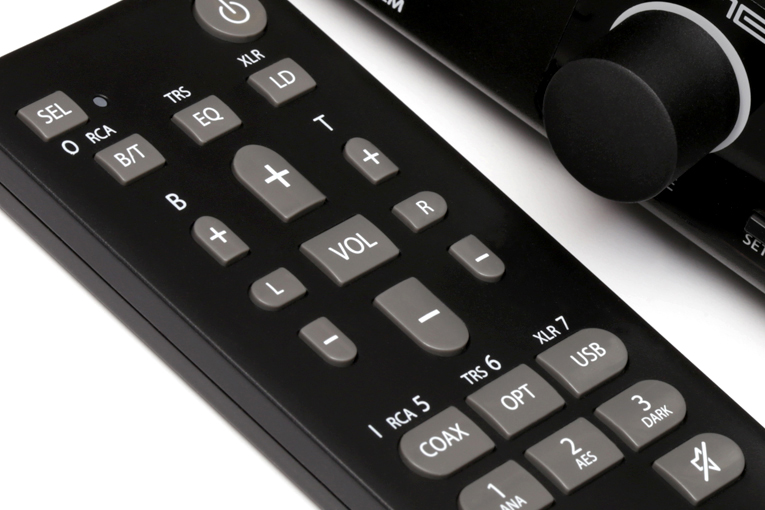
At first glance, the remote control seems kind of clunky and confusing, but as I began to use the ADI-2 DAC FS, I realized that though it doesn’t look like a more typical TV or stereo remote, it’s actually very logically laid out and utilitarian. It’s not a particularly luxe remote—the thin, lightweight plastic feels well made, but it can’t be used for self-defense like some of the more ostentatious remote controls included with certain hi-fi gear. Perhaps unsurprisingly, the remote control is user-configurable, with four keys that can be remapped for any action or function on the DAC. But because of my system and approach to using the DAC, I mostly used the remote to turn it on and off and to switch between the optical and coaxial inputs. After reveling in all the features included in the ADI-2 DAC FS, I sat down to listen to it. All those doodads and whatsits are meaningless if it sounds like crap, right?
Sound
Distortion is a funny thing. It often signals that we’re listening to something too loud. The audibly intrusive harmonic distortion created by an amplifier when it encounters clipping or a loudspeaker cone when it’s pushed beyond its linear operating region in a way mimics the higher-order overtones that voices and acoustic instruments are capable of when a musician asks too much of them. And the natural compression provided by the structures of our inner ear reacting to a nearby thunderclap or a roaring jet engine is not entirely unlike that of an audio system with the volume knob dimed. The sensation of hearing distortion as it rears its head during a listening session affects not only the perception of grit or grain in the sound, but also our perception of loudness, the acoustic space, and the size and shape of images in the soundstage. If the measurements and marketing literature are to be believed, this DAC’s distortion and noise figures are low enough to be considered below the audible threshold.
Like almost every other DAC on the market, the ADI-2 DAC FS is not a major contributor to the distortion present in a stereo system—not by far. And yet, the absence of even the slightest signal disturbance at the DAC stage is kind of an unusual experience. I’d had the unit in my system for nearly a week when, as a sanity check, I decided to compare the sound output of the ADI-2 to that of the analog outputs on the Toshiba DVD player. Up to this point, I was thinking, “It sounds OK, but there’s a bit of bloat in the bass, and it seems to have a bit of trouble placing things in the soundstage. Maybe this thing isn’t all it’s cracked up to be.” I spun Teenage Symphonies to God, the Mitch Easter-produced sophomore album by Velvet Crush (CD, 550 Music BK 64442). After listening to “#10” played through the ADI-2 DAC FS, I swapped the RCA cables over to the Toshiba and promptly realized I’d been listening to the RME DAC at a much louder level than I normally would have. I cranked up the volume while playing the CD straight from the Toshiba until it matched the level I’d been listening at with the DAC. It was too loud, and obviously so. The ADI-2 DAC FS plays so cleanly that the usual signals that it’s time to turn down the volume were so subdued that I didn’t even realize I wasn’t giving it a fair shake. The bass bloat I heard was most likely due to the bass playing loudly enough to begin overwhelming the room. I lowered the volume on the DAC 4.5dB and tried again. The distortion and noise levels were so low that I had to readjust my expectation of how my stereo was “supposed” to sound. I suppose this is a testament to RME’s design philosophy.
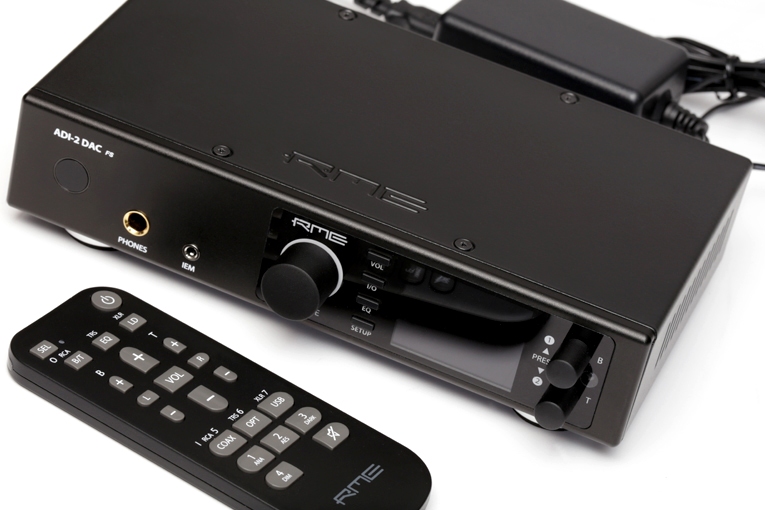
As I lived with the RME during the review, I began to settle in and become more comfortable with it. I dialed in the EQ to shelve off frequencies under 80Hz by 3dB, a setting that’s helpful for bass-heavy recordings and can be turned on or off using the remote. I also set up the remote to change between Sharp, NOS, Slow, and Short Delay Sharp filters on the fly. I tested these settings as I spun the 2016 remaster of XTC’s Skylarking (CD, Ape House APEBD108). This densely recorded album is a stylistic throwback to ’60s psychedelia, but it also clearly took advantage of the superior recording technology available when it was made in 1986. Complex passages rich with electric and acoustic instrumentation proved no problem for the ADI-2 DAC FS. It rendered Andy Partridge’s howling vox with the clarity necessary for it to remain intelligible while Colin Moulding’s bass thumped beneath a soundstage filled with biting guitars and ethereal synthesizers. “That’s Really Super, Supergirl” was a great track for demonstrating the RME’s forte of laying down a set of sonic images completely divorced from the speakers, as the staccato guitar solo floated right in front of the soundstage rife with panning synth effects. Despite each of the digital filters claiming its own characteristic behavior, and thus a unique sonic presentation, the differences between them were very slight, and I think I’d be hard-pressed to tell them apart in a blind test. And yet, I consistently gravitated to the Sharp filter, as it seemed to give the best sense of imaging, punch, and neutrality among them. The NOS filter was the only one that was really audible, as the early high frequency roll-off attenuated the upper octave enough that it sounded ever so slightly quieter than the other options. This was most obvious on tracks like “1000 Umbrellas,” where banks of string instruments play a major role. Whether due to the perfect impulse response or just the upper-frequency aberration, the NOS filter sounded a bit calmer, which may suit some recordings. However, the Sharp filter wound up being my usual choice, especially with rock music like XTC.
Some more contemporary psych rock was up next: I streamed The Weather by Pond (256kbps AAC, Universal Music Australia / Spotify) via the LG C1. The opening track, “30000 Megatons,” has a dynamic range that’s unusual in 21st-century digital recordings. This song gets off to a quiet start and builds dramatically in volume and intensity as it progresses, so I gave the volume knob a good clockwise twist. The ADI-2 DAC FS impressed me with its composure as the blissed-out synthesizers and tight, strobing bass built up and up until the music totally enveloped me, entirely filling my living room with sound. The DAC didn’t falter in either its control of the low frequencies or maintaining clear and distinct separation of sounds across the wide soundstage. As I changed gears musically, the DAC’s bass control and clarity made listening to hip-hop pleasing in a way that isn’t possible with many hi-fi components. The track “Snakes” from alt-rapper Joey Bada$$’s album 1999 (256kbps AAC, Pro Era / Spotify) features lyrics from Joey and T’nah Apex; both male and female vocals had a clean, natural quality, and importantly, they stood out clearly above deep bass and a moody, jazzy backdrop. Where DACs with a different sonic character might lose the all-important human voice amid the heavy beats and rhythms, the ADI-2 DAC FS consistently allowed all of the music to shine through on this album.
Talking up the strengths of the ADI-2 DAC FS will surely flatter both the product and the design ethos from which it sprang—its clarity, neutrality, and ability to immerse listeners in the program material allow it to completely get out of the way of the music. That’s about the highest compliment an audiophile can pay a piece of gear, though it’s not always black-and-white. When I played Come Away with Me by Norah Jones (CD, Blue Note 7243 5 32088 2 0) and Tigerlily by Natalie Merchant (CD, Mobile Fidelity Sound Lab UDCD 771), I wasn’t as impressed—or rather, I wasn’t as impressed as I was hoping to be. Both discs are top-notch audiophile-grade recordings, each with a sense of spaciousness, detail, and realism that most other recordings lack, even when played on the best equipment. With the ADI-2 DAC FS, both came across as a little mechanical or even sterile. The soundstage created by the RME appears to come from around and behind the speakers, but it’s relatively flat compared to that of competing DACs with different design goals, some of which may provide a soundstage that recedes deeper back behind the speakers and with greater dimensionality. The RME’s soundstage almost seems to come from the wall behind it, so while it’s precise and can provide an immersive experience, it’s not the most three-dimensional presentation I’ve heard. This DAC is a precision instrument, one that doesn’t add any sugar or spice to the source material, and both Tigerlily and Come Away with Me were engineered with a similar degree of attention to detail. The depth you hear with these recordings is what’s on the disc, but no more, or maybe even slightly flattened. I was surprised at this shortcoming, but chose to see the silver lining: while I wouldn’t be using my fancy audiophile recordings to show off this DAC, I was instead more drawn to playing the kind of music that I actually enjoy. What’s more, I was discovering new music via streaming on Spotify, and because the ADI-2 DAC FS consistently just got out of the way and performed well with virtually everything, I found I was having involving experiences with the music. My experiences with Pond and Joey Bada$$ sprang from listening to these artists in earnest for the first time; I now consider myself a fan of both. The RME deserves commendation for that.
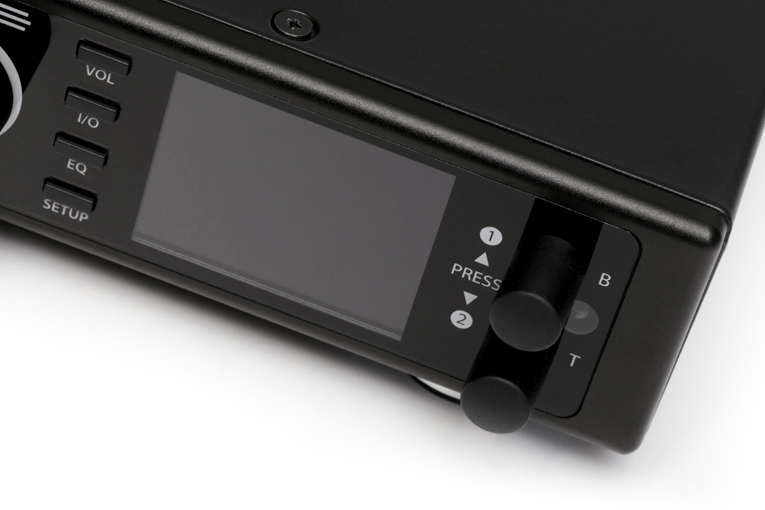
I tested both headphone outputs as well. Unfortunately, at the time of testing, the only headphones I had available were my Grado SR60e’s and Sennheiser HD 280 Pros. Neither really played to the strengths of either the Extreme Power or IEM output jacks, though I can confirm they worked as intended. The Extreme Power function forced me to turn the volume way down, so I expect that a more difficult load would be no problem for the ADI-2 DAC FS. Likewise, the level on the IEM output was lower, but there was still inaudibly low noise with both pairs of headphones. Playing Reading, Writing, and Arithmetic by the Sundays (CD, DGC 9 24277-2) through the IEM output with my Grados offered sound expectedly similar to what I normally experience through my stereo system—everything was well separated and highly intelligible, with sounds emerging from an inky-black background. I even tried out the Crossfeed feature, and while it didn’t work miracles for me, it did offer an interesting perspective on the sound of headphones that I’d never experienced before.
Comparison
The DAC I had on hand to compare against the ADI-2 DAC FS was the substantially less expensive S.M.S.L D300, which clocks in at $399. It might seem like an inappropriate comparison at first, but it might not be unusual for a budding audio nut to step up from something like the S.M.S.L to the RME. How did the two compare? While the ever-so-slightly warmer S.M.S.L flatters my uber-high-grade recordings a bit more (Jones, Merchant, Dire Straits, et al.), the RME’s wider, more spatial soundstage gives it the edge on virtually all other source material, to say nothing of its features list. The D300 offers high-resolution Bluetooth connectivity that the ADI-2 DAC FS lacks, but this isn’t a feature I ever use. And with six digital filters to the S.M.S.L’s two, plus parametric EQ, dual headphone outputs, and on and on and on, the RME feature set smokes the S.M.S.L There are other DACs in its price range, most of which sound very, very good, but few of them rival the ADI-2’s functionality.
DACs in the same price range as the RME ADI-2 DAC FS include the S.M.S.L VMV D2 ($1699), the Denafrips Ares II ($1149), and the Schiit Gungnir ($1199). These products are fairly disparate in terms of their design objectives, yet a noteworthy common thread is that they all purport to be close to the top-of-the-line offerings. In fact, you might wonder if, as the second-in-line to their respective companies’ flagship models, the VMV D2 and the Gungnir are attempts to hit the knee of the diminishing returns curve. I didn’t have them on hand to compare directly to the ADI-2 DAC FS, but if the RME competes with these other products in real-world performance, then other digital hi-fi manufacturers will face a heady challenge if they want to take on the heavily featured DAC from this German pro audio company.
Conclusion
Instead of giving the RME ADI-2 DAC FS a wholesale thumbs up or thumbs down, I think we should consider the type of user this device is designed for. There’s someone out there for whom this DAC is the endgame. Since the ADI-2 DAC FS is a DAC, DSP unit, preamplifier, and headphone amp all rolled into one package, someone with a desktop setup who uses headphones as well as loudspeakers would be able to eliminate three or four boxes on their desk. This is an obvious target, but users like this occupy a relatively small niche among hi-fi enthusiasts.
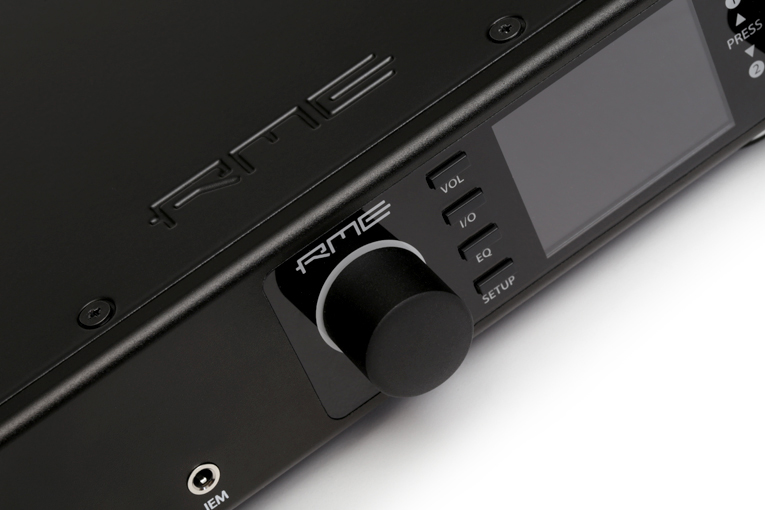
Other audio lovers—myself included—are liable to succumb to similar uncharitable rationalizations about its overall suitability: “It has a ton of features I won’t use. The company probably spent all its time and money adding more stuff rather than focusing on the sound quality. It’s not worth considering.” Of course, there are people out there looking for a DAC with a particular sonic characteristic that synergistically complements their system; these audiophiles are hunting for the perfect DAC. I sympathize with their quest for great sound, but in the meantime, I say give the RME a fair shot. I found myself using and enjoying its myriad features on a daily basis, and I’m going to miss it when I send it back. The ADI-2 stays out of the way of the music enough for you to forget it’s there—and that’s a wonderful thing. It also offers enough opportunities to tweak the settings and dial in exactly the sound you want. While it’s not for everyone (and some folks may be put off based on looks alone), the ADI-2 DAC FS is an astoundingly versatile DAC, one that represents a great value in its price class and beyond. And it’s one worthy of consideration by any music lover looking for a high-performing digital solution.
. . . Matt Bonaccio
mattb@soundstage.com
Note: for the full suite of measurements from the SoundStage! Audio-Electronics Lab, click this link.
Associated Equipment
- Speakers: DIY Paul Carmody Amiga, built from a Parts Express kit.
- Subwoofers: Paradigm UltraCube 10 (2) with MiniDSP 2x4 module for bass management; Jameco 170245 Linear Regulated DC supply for the DSP module.
- Preamplifier: DIY Wayne’s Burning Amp 2018 Line Stage; TentLabs relay-switched resistor-ladder attenuator; separate AMB Labs σ22 power supply.
- Power amplifier: McIntosh Laboratory MA6850 integrated amp (using power amp input).
- DAC: S.M.S.L D300.
- Digital cables: Tributaries Delta 75-ohm coaxial; Monster Cable optical cable.
- Television: LG C1 OLED display, 55″, directly wired via Cat6e cable to router.
- Internet router: Netgear R6080; Jameco 170245 Linear Regulated DC supply.
RME ADI-2 DAC FS Digital-to-Analog Converter
Price: $1299.
Warranty: Limited six-month warranty, parts and labor.
Audio AG
Am Pfanderling 60
D-85778 Haimhausen
Germany
Phone: +49 (0) 8133 918170
Website: rme-audio.com
US distributor:
Synthax Incorporated
6600 NW 16th Street
Suite 10
Ft Lauderdale, FL 33313
Phone: (754) 206-4220
Website: www.rme-usa.com






















